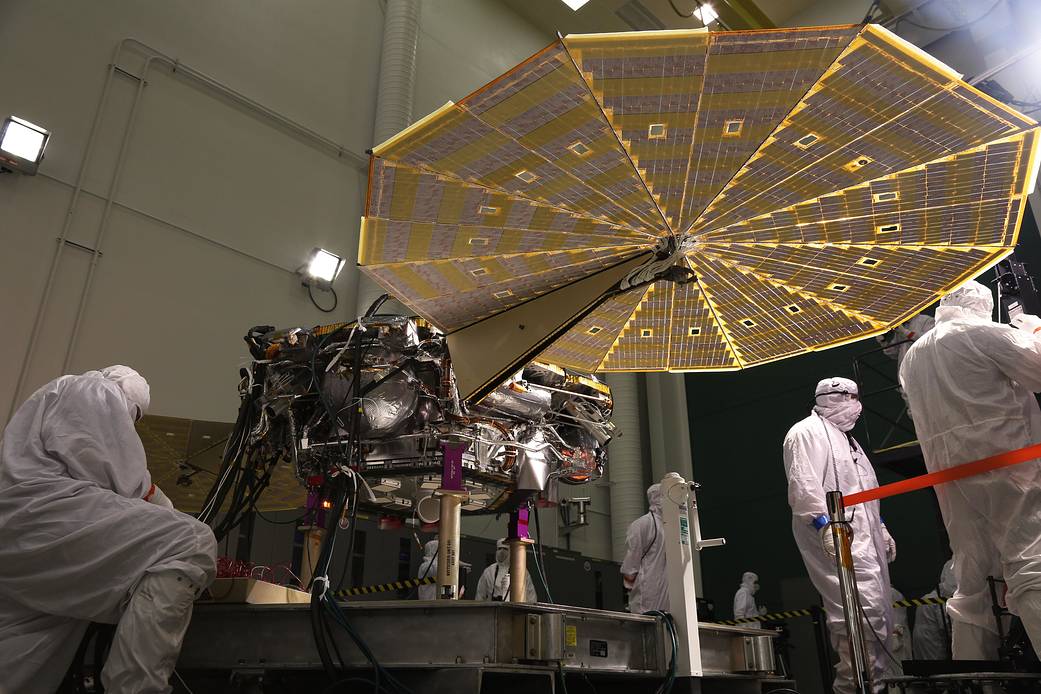While in the landed configuration for the last time before arriving on Mars, NASA’s InSight lander was commanded to deploy its solar arrays to test and verify the exact process that it will use on the surface of the Red Planet. During the test on Jan. 23, 2018, from the Lockheed Martin clean room in Littleton, Colorado, engineers and technicians evaluated that the solar arrays fully deployed and conducted an illumination test to confirm that the solar cells were collecting power. The fan-like solar panels are specially designed for Mars’ weak sunlight, caused by the planet’s distance from the Sun and its dusty, thin atmosphere. The panels will power InSight for at least one Martian year (two Earth years) for the first mission dedicated to studying Mars’ deep interior.
InSight, short for Interior Exploration using Seismic Investigations, Geodesy and Heat Transport, is a Mars lander designed to give the Red Planet its first thorough checkup since it formed 4.5 billion years ago. It is the first outer space robotic explorer to study in-depth the “inner space” of Mars: its crust, mantle and core. Studying Mars’ interior structure may answer key questions about the early formation of rocky planets in our inner solar system – Mercury, Venus, Earth and Mars – more than 4 billion years ago, as well as rocky exoplanets. InSight also will measure tectonic activity and meteorite impacts on Mars today.
InSight is scheduled to launch in May 2018 from Vandenberg Air Force Base in California on a United Launch Alliance Atlas V rocket.
Image Credit: Lockheed Martin Space


























